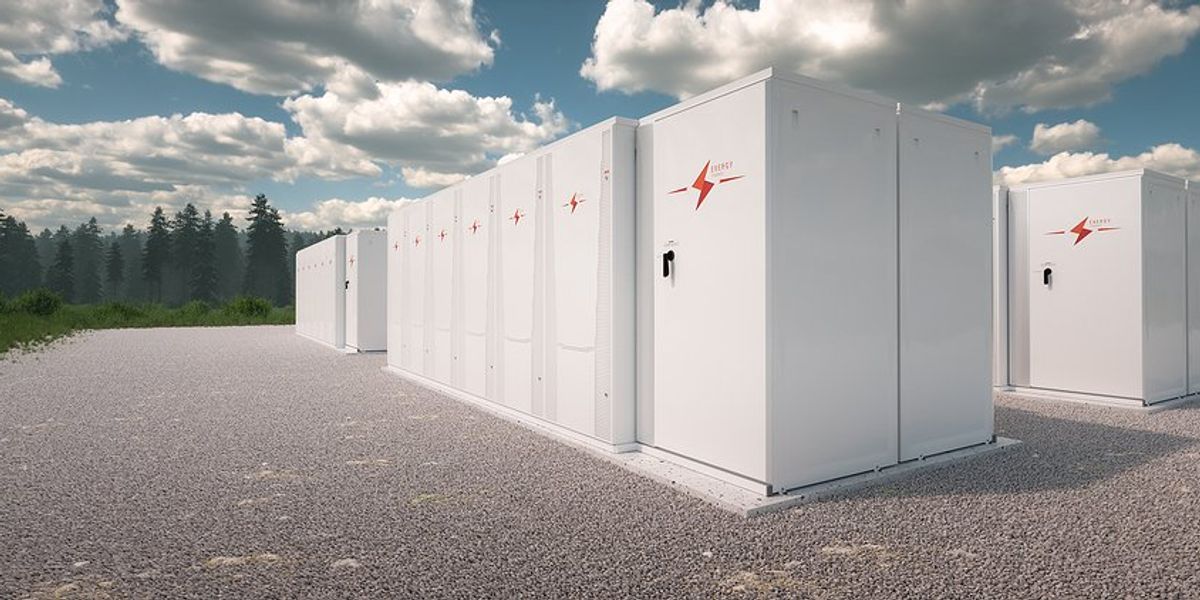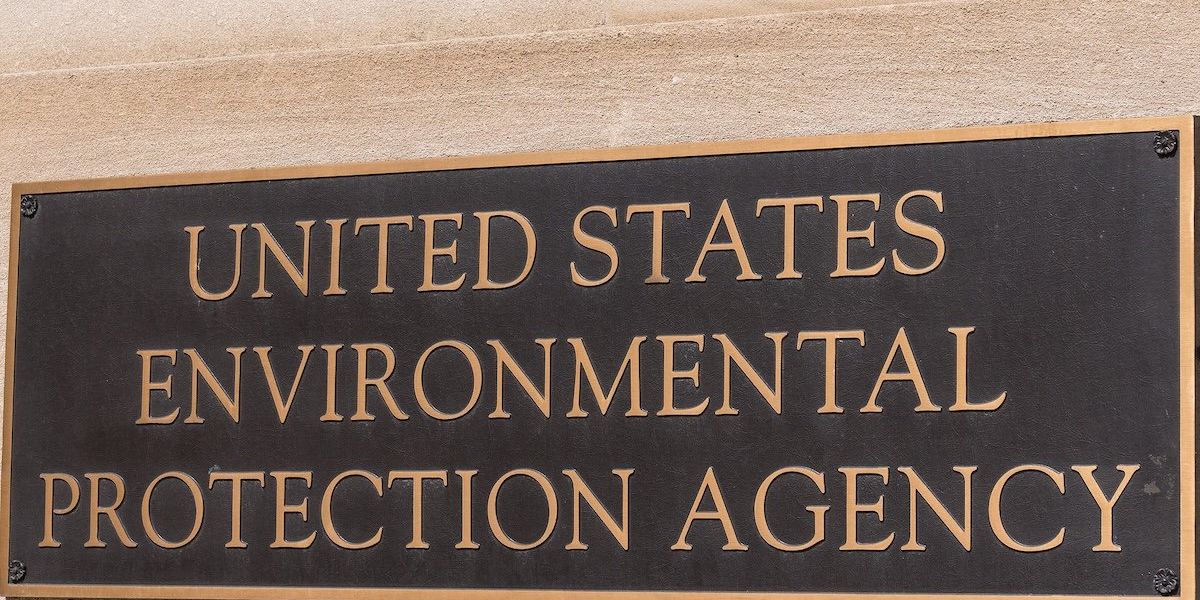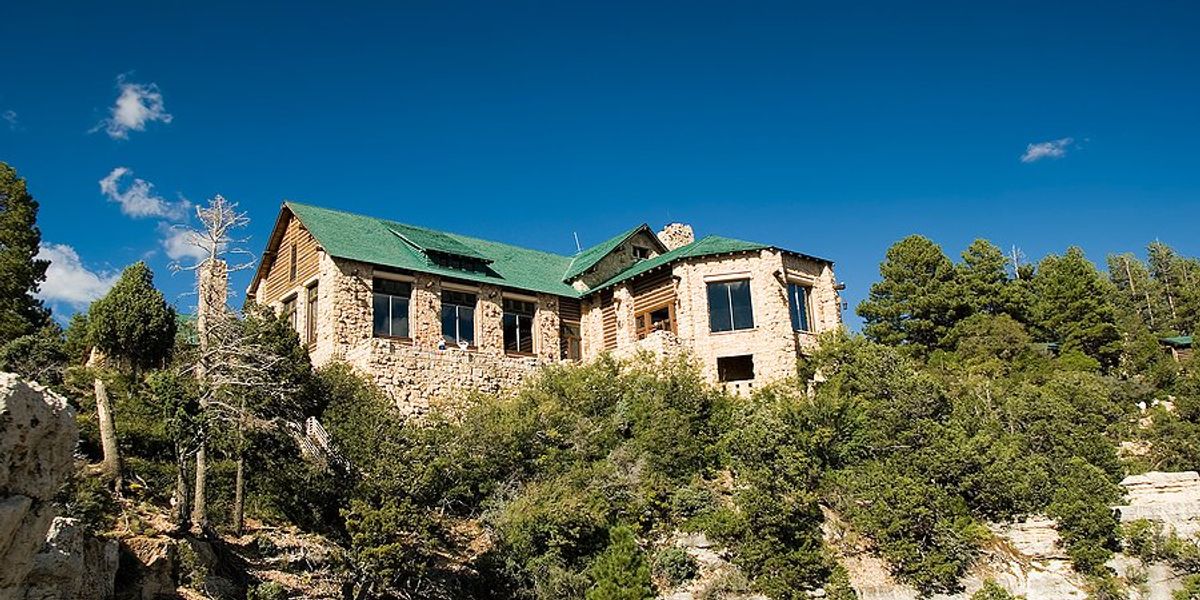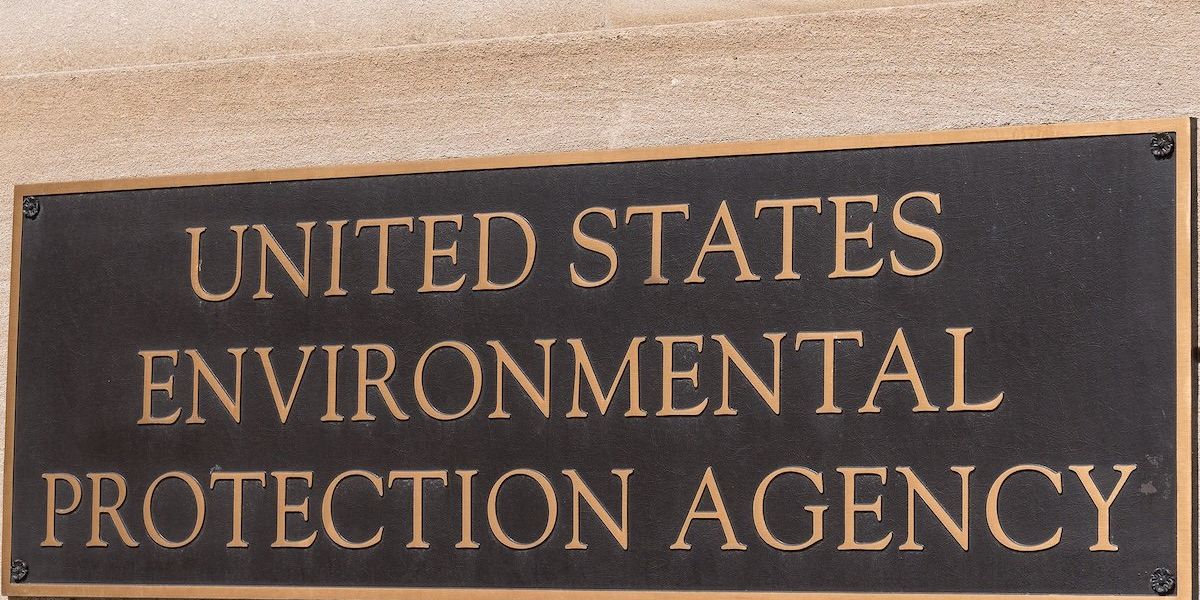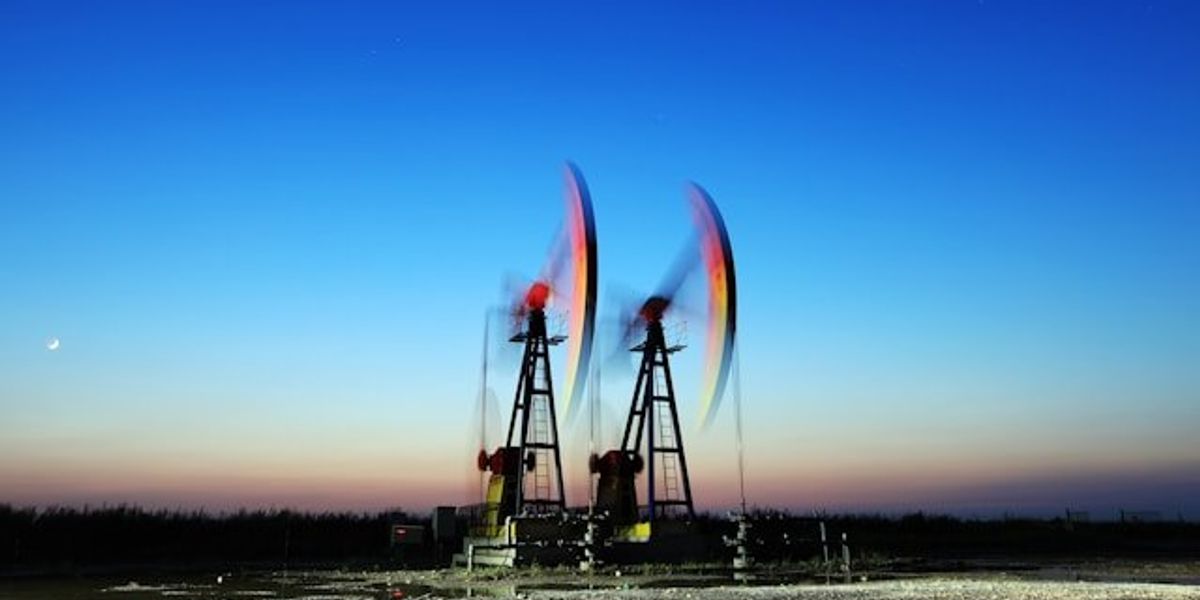tdc
Biden finalizes long-awaited hydrogen tax credits ahead of Trump presidency
Responses to the new rules have been mixed, and environmental advocates worry that Trump could undermine them.
The Biden administration has finalized long-anticipated hydrogen tax credit rules just weeks before Trump takes office.
The rules, set by the U.S. Department of the Treasury and the Internal Revenue Service, will determine when hydrogen producers can claim substantial tax credits intended to incentivize the production of clean hydrogen energy.
The draft rules received over 30,000 comments from industry groups and environmental advocates alike that Treasury and the IRS spent the last two years interpreting. While concessions were made on both sides, the reception of the rule has been mixed and the rule could be subject to change under the Trump administration.
The Biden administration has pushed for clean hydrogen production to decarbonize heavy industries that are difficult to electrify, like trucking and steelmaking. Hydrogen is often more expensive to produce than traditional energy sources, so the tax credits were created to decrease costs for the producer and allow hydrogen to compete with traditional energy sources in foreign and domestic markets.
- YouTubewww.youtube.com
Hydrogen can be produced through a variety of methods with varying carbon emissions. Clean hydrogen is defined by the new rules as creating up to four kilograms of carbon emissions per every kilogram of hydrogen produced. Credit-eligible hydrogen production has two pathways, electricity or methane. Eligible electricity sources include renewables like solar and wind, but also nuclear. Additionally, hydrogen production from methane, whether using natural gas, steam reforming or coal mining, is also included with the addition of carbon capture technologies to reduce emissions.
The tax credit, which producers can claim for up to a decade, operates on a tiered system that rewards hydrogen producers with the lowest carbon intensity with the largest credit of $3 per kilogram and is scaled down to about 60 cents per kilogram. The program will expire on Jan. 1, 2033, meaning facilities must begin construction by this date if they wish to claim the credit.
Concessions and Changes
Reception of the final hydrogen rules have been mixed. In the 30,000 comments made on the draft rules, industry groups requested things like more pathways for natural gas and looser requirements for clean hydrogen production, while many environmentalists requested a heavier emphasis on renewable energy and strengthened emissions calculations.
Beyond the concerns about rules, many stakeholders have spoken out against federally-funded hydrogen development, citing a lack of transparency and lack of public involvement in the decision-making process.
Environmental groups have supported “three pillars” as safeguards for hydrogen production and lobbied for them to remain in the final rules: incrementality, temporal matching and deliverability. They’re complex, but they aim to ensure that hydrogen growth is from new, sustainable facilities (incremental), that hydrogen facilities can produce energy supply to meet a demand (temporal matching) and that hydrogen is reliably delivered (deliverability). These three pillars, in theory and supported by studies, should prevent imbalances that could inadvertently result in more carbon emissions than not producing hydrogen to begin with. These safeguards specifically apply to hydrogen using electricity, whether from renewables or nuclear sources.
While the principles of the three pillars did remain in the final rule, they did not go untouched.
“There have been a lot of concessions,” Matt Lifson, an attorney with the Institute for Policy Integrity at the NYU School of Law, told EHN. “The Treasury did give industry a bunch of things that it asked for.”
For example, Lifson said, there are some exceptions for existing nuclear facilities that will be allowed to claim the credits despite not being new sources of energy, and some rules are more lax in states like California or Washington due to their “robust greenhouse gas emission caps,” according to the Treasury.
“One of the [federal] hydrogen hubs is in California, [and] one of the hydrogen hubs is in the Pacific Northwest,” Lifson noted. “So that [exemption] will make it easier for those hubs…And going back to the nuclear issue, several of those hubs involve hydrogen made from nuclear energy.”
Other concessions included more flexible timelines and deadlines on production standards, which some hydrogen producers praised.
“The new hydrogen rules mark significant progress, with notable revisions,” Plug Power, a hydrogen fuel cell company said in a statement. “While these updates are encouraging, we look forward to collaborating with the new administration to refine the regulations.”
Will the rules hold under a Trump presidency?
 Trump administration plans to overhaul Interior Department with budget cuts and policy reversalsCredit: palinchak/Big Stock Photo
Trump administration plans to overhaul Interior Department with budget cuts and policy reversalsCredit: palinchak/Big Stock PhotoIn a matter of days the Trump administration will have the ability to challenge the hydrogen rules under the Congressional Review Act.
“There's still the possibility that the rules could change under the Trump administration,” Lifson said. “So I don't know how much certainty we really have.”
There are a few factors that could prevent the rules from being invalidated. Amidst more pressing issues, hydrogen production might not make it onto Trump’s priority list for his first 100 days in office, and congressional review must be conducted within 60 days of a rule being published. Even if Trump does tackle the new rules on time, the process requires a majority vote, which could be difficult to achieve since the hydrogen credit rule has bipartisan support and the incoming Republican Congress will hold the majority on a thin margin.
“There is always a chance that this is an acceptable compromise between various segments of industry and the environmental community and that [the final rules] could hold,” Lifson said. “There's also the fact that if the Trump administration wanted to rewrite the regulations through its own rulemaking, they would need to rationally explain any departures that they made from the Biden rule. It can't just be a ‘because we said so’ type of thing.”
Residents shout down oil and gas execs over fracking at US Steel mill
"We don't want you here. Go somewhere else."
Tensions ran hot Wednesday night during a community meeting about proposed fracking at the site of U.S. Steel's Edgar Thomson Steel mill in Braddock, 10 miles east of downtown Pittsburgh.
Approximately 200 residents jammed into the rowdy meeting, held in a fire hall bedecked with electronic bingo boards and folding chairs. Dozens lined up at a microphone to tell representatives from U.S. Steel, Merrion Oil and Gas, and the Pennsylvania Department of Environmental Protection exactly what they thought of the fracking plan.
"We've been dealing with U.S. Steel's poor environmental record here for 150 years," one resident said, pointing his finger at the oil and gas executives. "We have had enough. You keep saying you want to respect our community. If really want to respect our community, keep moving. Go somewhere else. We don't want you here."

Under the plan, New Mexico-based Merrion would drill an unconventional horizontal well, or a "fracking" well, on part of U.S. Steel's property to provide the facility with natural gas.
Fracking, another name for hydraulic fracturing, is a process of extracting oil and gas by drilling deep wells and injecting liquid at high pressure. The practice has been linked with a range of health effects including skin, genital, and urinary issues, low birth weights, asthma, and depression. It has been banned by New York, Vermont, and Maryland, along with a growing number of U.S. counties and foreign countries like France, Germany and Ireland.
Densely populated, urban neighborhoods in Allegheny County surround the proposed well sites. The drilling infrastructure would primarily be located in North Versailles Township, but would also extend to East Pittsburgh and North Braddock.
Those communities include designated "Environmental Justice Areas," or census tracts where 20 percent or more individuals live in poverty, and/or 30 percent or more of the population is minority. Several of the residents who spoke pointed out that the racial makeup of the mostly-white panel did not mirror the racial makeup of the community members in the room, about a quarter of whom were people of color.
The representative from the Office of Environmental Justice, tasked with keeping the discourse civil during the meeting, noted that while the Pennsylvania Department of Environmental Protection has environmental justice policies in place, they're a bit of a "moving target:" The policies are not enforceable laws.


Merrion operates many conventional wells throughout the country, but this is the first unconventional or fracking well the company has ever proposed to drill, and their first well of any type in Pennsylvania, which has a unique topography.
Ryan Merrion, the great grandson of the founder of Merrion Oil and Gas, was in attendance. He and the other representatives from Merrion, U.S. Steel, and the Department of Environmental Protection wore suits and sat at long tables before microphones at the front of the room. Public attendees were asked to leave all protest signs outside the building. So instead many members of the audience wore black face masks with white lettering bearing messages like "Frack no" and "not for shale" or T-shirts reading "Our health vs. their wealth" and "Don't frack the E.T. Mill."
Heckling from the audience was frequent throughout a brief PowerPoint presentation from Merrion spokesperson Ryan Davis, which included statements about being a family company that prioritizes safety above all else, a slide emphasizing Merion's experience operating fracking wells in other urban areas, and a review of the company's plans to mitigate perceived safety concerns (video below).
Braddock community meeting on fracking at the Edgar Thomson millwww.youtube.com
The first person to take the microphone asked, to thunderous applause, why the community wasn't given access to the projector and invited to give a PowerPoint presentation, as Merrion had been.
When a representative from the Office of Environmental Justice repeatedly stated that they would not "take sides," a community member responded, "You're the Department of Environmental Protection. You're supposed to be on the side of protecting the environment."
Many residents raised concerns about increased traffic on Route 30 after a Merrion representative stated that it would receive the increased truck traffic associated with fracking. Last year, a landslide caused a stretch of the highway to collapse, destroying an apartment building, and residents worried that the increase of heavy vehicle traffic could cause a similar event.
Braddock community meeting on fracking at the Edgar Thomson millwww.youtube.com
Merrion operations manager Ryan Davis stated that the increased truck traffic was temporary and would reach a high volume only during the initial drilling phase. DEP spokesperson Scott Perry stated that the agency is not evaluating erosion near the highway as part of their permit review for the project.
Residents also repeatedly questioned how the project would benefit the community and why they should accept it. Davis answered that legally required impact fees will be distributed to the state and paid out to impacted municipalities.
"It's not our job to ask whether a project is good or bad for a community," answered DEP spokesperson Scott Perry. "Fundamentally, from DEP's perspective, this is a land use issue."
Many community members clearly felt frustrated by Perry's response. One heckler demanded to know whose job it was to decide whether the project was good or bad for the community, and how they could talk to them.
Others raised concerns about increased air pollution, an ongoing problem in the Pittsburgh area, and cited the statistic that children in the region's most polluted neighborhoods have asthma rates more than double the national average.
The DEP spokesperson was quick to say that their agency doesn't regulate air quality in this region and they aren't taking it into consideration while reviewing the three permits they've received for the project. Air quality in the region is overseen by the Allegheny County Health Department, which was not represented at the meeting. Some permitting for the project may need to go through that agency, but those permits have not yet been filed.

Rachel Priselac, a young mother in attendance said she's hoping to have a second child, but is afraid, knowing that she lives within two miles of the proposed wells and that research has shown infants born in close proximity to fracking operations have low birth weights.
"I can not eat lunch meat or sushi," she said. "I can do everything else you're supposed to do while you're pregnant. But what I can't do is pick up and move my family away from our home because you have chosen to drill here. 21,000 people live in this community. How many of those are children, or people who want to have children?"
Many audience members also stated that they don't trust U.S. Steel due to their long history of clean air regulation violations and their history of contention with union workers, and asked why they should expect this project to go any differently.

"My dad worked for U.S. Steel his whole life," said resident Tony Buba. "When I was a kid, my family was eating surplus cheese and peanut butter when the union went on strike because U.S. Steel didn't want to pay workers what they deserved. So my dad helped get the workers today the good contracts they have, but one thing he told me was, 'Never trust U.S. Steel.'"
He added, "In this community, we have to fight for everything. We had to fight for two years to try and save [our only] hospital. We have to fight for kids to feel safe in school. We have to fight for public transit so people can even get to their jobs. We have to fight for police to get proper training so they don't continue to shoot our children in the back."
Last year an East Pittsburgh police officer shot unarmed 17-year-old Antwon Rose in Braddock. The shooter was acquitted last week, and protests erupted throughout the greater Pittsburgh region.
"Meanwhile, we're riddled with asthma and cancer from pollution," Buba added. "We're exhausted. But as you can tell here today, we still won't stop fighting."
Michelle Wyman: For infrastructure of the future, focus on resilience
NCSE 2019 conference: Leading with science, paving the way to a sustainable future.
Editor's note: Environmental Health Sciences is proud to be a media partner with the National Council for Science and the Environment and will be at their annual conference Jan. 8-10.
The National Council for Science and the Environment is ringing in the new year with the NCSE 2019 annual conference focusing on the fundamental theme of "sustainable infrastructure & resilience."
Year after year, the NCSE community comes together as a collection of some of the most cutting-edge, relevant, and pertinent ideas on the cusp of science and environmental policy. NCSE brings together more than 700 scientists, educators, policy-makers, researchers, government officials, civil society members, and business leaders to work towards building a collective, sustainable future.
This year's conference theme builds upon the "science, business, and education of sustainable infrastructure" narrative from the NCSE 2018 conference. We are committed to improving and enhancing our built, natural, social, and cyber infrastructure. Equally important and worthy of exploration: The theme of resilience and the vital role resiliency plays in promoting sustainability.
Resiliency—commonly understood as the ability to withstand, adapt, and bounce back—goes hand in hand with our broad-based definition of sustainable infrastructure. The theme of this year's conference runs central to our lives and lived experiences. From the natural to the social, built, and cyber infrastructure, the resiliency and sustainability of our environment enables us to face and overcome some of our most pressing challenges confronting communities the world over.
This year's sessions cover an array of topics such as coastal resiliency, environment and health, transportation, and energy. Attendees will hear from a diverse pool of business leaders—UPS, the SPECTRUM group, Siemens, and Tesla—on their investments in research and innovative approaches to sustainability and carbon utilization. Keynote presenters include Carl Page, president of the Anthropocene Institute; Jeff Nesbit, executive director of Climate Nexus; and Julia Marton-Lefévre, former director general of the International Union for Conservation of Nature. Visit our website to review the sessions, read about our speakers—and of course to register for this important event.
We invite you to be a part of the NCSE community and to network with hundreds of individuals, visit exhibits, and honor the leaders in the field. We look forward to welcoming you in Washington D.C. this January. Online registration is open until January 2. Join the dialogue, share your science and work, and be a part of building a resilient and sustainable future at the NCSE 2019 Annual Conference.
Michelle Wyman is executive director of the National Council for Science and the Environment
Here’s why NASA is working on a concept crewed mission to Venus
Here's a climate story that speaks to the 14-year-old science geek in all of us.
Start with some basics:
The Venusian atmosphere is comprised of 97 percent carbon dioxide, about 3 percent nitrogen and trace amounts of other gases.... The current climatic conditions and composition of the atmosphere are the result of a runaway greenhouse effect, (an extreme greenhouse effect that cannot be reversed) which transformed the planet from a hospitable Earth-like "twin" world in its early history.
That creates enough of an insulating blanket to drive the planet's surface temperature to 870ºF (460ºC), enough to melt metals like lead and bismuth—and which, the article notes, may fall as "snow" on Venus' higher mountain peaks.
By contrast, Earth's CO2 percentage is 0.04 percent (or 400 parts per million), and scientists fear a rise to 0.06 could render vast swathes of our planet uninhabitable or unsuitable for agriculture.
NASA, according to this fascinating story in Popular Science, is sketching ways to send manned airships to Venus' atmosphere to further our understanding of the evolution of our solar systems (and others!) and test the extremes of our climate models.
As surprising as it may seem, the upper atmosphere of Venus is the most Earth-like location in the solar system. Between altitudes of 50km and 60km, the pressure and temperature can be compared to regions of the Earth's lower atmosphere. The atmospheric pressure in the Venusian atmosphere at 55km is about half that of the pressure at sea level on Earth. In fact, you would be fine without a pressure suit, as this is roughly equivalent to the air pressure you would encounter at the summit of Mount Kilimanjaro.
Scientists have theorized that Venus and Earth were twins in their early history, formed of the same ingredients and each with oceans of water. But Venus gets far more sunlight, and NASA suspects Venus' oceans evaporated. Radiation broke apart the water vapor molecules: Hydrogen escaped to space, and CO2 accumulated.
Scientists see no chance that our human activities can trigger such a one-way ticket to warming. But it sure would be cool to be on a platform of an airship high above Venus, wearing little more than an air supply and a chemical haz-mat suit.
Read the full story on Popular Science.
Peter Dykstra: What will it take on climate change?
Hurricanes, algae blooms, rising seas and melting ice. How much more before climate denial fades away?
As the Florida Panhandle begins to recover from Hurricane Michael, the state's attention will turn to a big Senate race next month. Hurricane Michael may cast the deciding vote.
Term-limited Republican Gov. Rick Scott hopes to unseat veteran Democratic Sen. Bill Nelson, and if he does, Democrats can kiss their hopes to take over the Senate goodbye.
Scott just completed a tour de force as the in-charge governor leading the emergency response to Michael. Like him or not, he's good at this. By contrast, Nelson is stiff and uneasy on TV. Fair or not, elections are decided by such things.
Scott is also a first-rate climate denier. In 2015, whistleblowers and former staffers for the state environment agency accused Scott of banning discussion of climate change in any state meetings or documents. Scott denied the charges.
For the past eight years, Scott has run a state experiencing rising seas, intense storms, and unprecedented algae blooms offshore. And this climate denier's political star may be rising. Go figure.
If he wins a Senate seat, Gov. Rick Scott will become the latest example of how climate denial is not a political liability.
Climate change is rarely mentioned as a factor in news coverage of extreme weather or wildfires. It was rarely mentioned in coverage of Hurricanes Florence and Michael. And it will be up to the somnolent Senator Nelson to make it an issue as he fights for his political life over the next four weeks. In the immediate wake of Hurricane Michael, he appears to be reticent to do so, for fear that he'd appear to be politicizing a tragedy.
Denial: Not a political liability
If he wins a Senate seat, Scott will become the latest example of how climate denial is not a political liability. The same can be said for Republican Sen. Ted Cruz in Texas.
How did Republicans get to be the way they are today? It wasn't always this way. From about 2008 to 2010, some of the biggest names in the party backed away from previous statements and actions acknowledging the threat of climate change. Newt Gingrich disowned a famous climate commercial he did with Nancy Pelosi. Mitt Romney became a doubter after creating a forward-thinking climate action plan while Massachusetts governor. The late John McCain backed off after co-sponsoring climate legislation. Former Alaska Gov. Sarah Palin – Sarah Palin!! – created a "climate sub-cabinet" before departing for national aspirations and reality TV.
As denial slowly fades among the general public, it's more firmly entrenched than ever in Washington, D.C.
By 2014, it was simply out of the question for a Republican who wanted to seek or keep an elective office to stump for climate action. "I am not a scientist" became a nonsensical disclaimer, as if lack of a Ph.D. robbed one of the moral authority to listen to real scientists and form an opinion. Scott was one of many who went there, as did Florida's other senator, Republican Marco Rubio.
Fertile turf
With the 2016 elections, President Trump's cabinet became fertile turf for climate deniers. As denial slowly fades among the general public, it's more firmly entrenched than ever in Washington, D.C.
Florida just got walloped by the most intense hurricane ever to landfall on its Gulf Coast. The summer saw algae blooms on both its coasts that surpassed any previous outbreaks. Miami Beach is actively preparing to elevate its streets to adapt to flooding that's already underway.
All of which returns us to the central question: Just what will it take to get climate deniers like Scott to admit that there might be a little problem here? If he's rewarded with a six-year term in the Senate, the solution may be more difficult than ever.
Grand hopes for a civil discussion on climate, dashed in the comments section
A call for unity around the latest warning from climate scientists finds the denial community alive and well.
Love science? Whatever you do, don't read the comment string on the Portland Press Herald's "Pearl Harbor" editorial.
The paper, circulation 57,000, editorialized that the latest climate report out of the scientific community "is our Pearl Harbor moment."
"This is not just an environmental crisis, it's a test of our ability to govern ourselves," the paper's editorial board concluded.
It's an optimistic, noble thought. If the comments at the end of the article are any indication, we're failing.
'The hysteria is mounting'

Many scientists, activists, and journalists have long believed that climate denial is on its last legs. It's alive and well in a forum like this one.
Several noted, like "Blogmaster Snoop Dog," that this is the umpteenth dire warning from scientists on topics ranging from population to global cooling to the disappearance of trees to, yes, climate change. And a comment from "Sailor12" suggests these scientific assessments aren't changing too many minds:
The hysteria is mounting as the "Global Warming" hoax is increasingly exposed as a fraud: fraudulent science; fraudulent propaganda....
Quoting Sartre

Of course, the Press Herald's comments are downright polite by today's Internet standards—and feel remarkably civil compared to comment strings following, say, any article on Breitbart.com. The discussion included references to the Enlightenment and existentialism; "hpmcg" quoted Sartre, prompting "todiscus" to offer his or her own two cents:
Wow. You just don't see Sartre quoted here every day. Thanks.
Worthy of your time: The full Press Herald editorial, along with the 49 (and counting) comments.
Peter Dykstra: Messiah wanted
The world desperately needs an environmental leader
Messianic, charismatic leaders are hard to come by, but not impossible. Gandhi led what is now a nation of a billion people to freedom. Mandela did the same with South Africa. Of the pantheon of heroes in the American civil rights movement, Martin Luther King, Jr. stands above all.
The global environmental movement has never had such a unifying leader. Maybe it's what's needed, particularly since in the U.S., the anti-environmental movement seems to have placed its own Messiah in the White House.
One would think that a movement that seeks to challenge so many ills and threats would have an easier time of it. Species and habitat loss, climate change, air and water pollution, declining sperm counts and hormone-disrupting chemicals, vanishing water supplies and a dozen other daunting challenges would be part of an environmental messiah's job description.
There's no shame in devoting one's life to a cause while falling short of Messiah status. Dozens of partial Messiahs have risen on single issues: Bill McKibben and Al Gore on climate; the late Wangari Maathai on agriculture; Sylvia Earle on oceans; Lois Gibbs on hazardous waste; and countless Goldman Environmental Prize winners, among many others.
Closer to home, Americans see little hope that environmental issues will be more than an afterthought in national politics. Al Gore left elective politics eighteen years ago; so bleak is the landscape that it's been ten years since a Presidential debate contained a question or substantial mention of compelling issues like climate change, or anything else environmental..
So who else is there? Pope Francis, with his unprecedented environmental encyclical Laudato Si? The Roman Catholic Church gives His Holiness a semi-captive audience of a billion followers.
Some big mitigating factors: Not all of those billion are on board; the Vatican is still the world's biggest obstacle to family planning and the Pope continues to spend both political capital and cold cash on the Church's seemingly neverending pedophilia/coverup scandal.
Might it be a pop culture giant like Leonardo DiCaprio? Historically, Hollywood's pop culture giants have limited range. Then again, there was Hollywood middleweight turned political giant Ronald Reagan, or climate-smart Arnold Schwarzenegger, a.k.a. Conan the Republican, the former governor of California.
How about someone with a seemingly unlimited bankroll like George Soros, Michael Bloomberg, or Tom Steyer? Bear in mind that "charismatic" is part of the equation.
These are the options that first come to mind for an aging, retired Catholic American male like me. Hopefully, somewhere in the world, there's a youthful dynamo, possibly a woman or person of color, who's ready to lead a person of pallor like me. If you know someone like that, could you let me know?
One final reason why it's urgent to find the voice, face, and reputation to help inspire and lead the world away from climate peril: All too often, the traditional sources of inspiration and political will to prevent environmental disaster has been disaster itself: A flaming river, melting icecap, or vanishing species for whom the political will arrives too late.
All too often, we've closed the barn door after the black rhino has left. Wherever you are, green Messiah, we need you.














